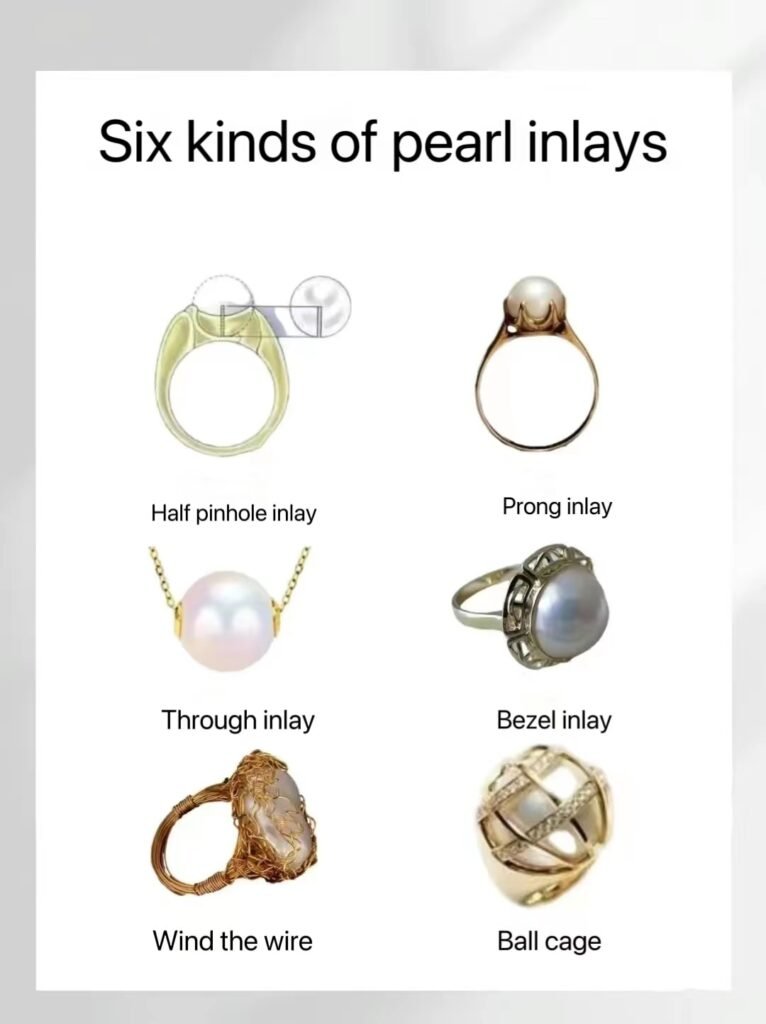
1. Half pinhole inlay
Punch half a hole in the pearl, and fix the pearl on the base with the metal needle and special glue on the inlay base, so the inlay is relatively strong and the shape is also very accessible.
Advantages: Solid, relatively firm, modeling-free, and changeable
Disadvantages: The thickness of the needle and the pearl hole may not be stable, and the pearl may need to be reamed, resulting in damage to the pearl.
Suitable jewelry: pendants, rings, ear pins, and brooches
2. Prong inlay
Prong inlay is generally more likely to appear in classical and vintage jewelry; the shape is straightforward and not too complicated.
Advantages: Retro style, the area of viscose water is more extensive, which significantly increases the stability.
Disadvantages: The style is bulky and monotonous
Suitable jewelry: rings, earrings, and pendants
3. Through inlay
Through inlay, this method is suitable for through-hole pearls, with a chain through the pearl to make jewelry; this jewelry style usually requires a high quality of a single pearl.
Advantages: simple, versatile, and low inlay cost.
Disadvantages: single style, there are requirements for the thickness of the pearl hole.
Suitable jewelry: pendant
4. bezel inlay
The bezel inlay method is commonly used on mabe beads because mabe beads have a relatively flat side, which is very suitable for bezel inlay.
Advantages: The pearl jewelry set in the bag looks very grand and heavy
Disadvantages: The inlay force is glued, and there is no needle to fix it
Suitable jewelry: rings, earrings, and pendants
5. Ball cage
The ball cage inlay is to make a metal cage with a switch that can place pearls, most of which are pendant styles. For those who buy the perfect pearl but want to avoid drilling holes are good.
Advantages: Completely non-destructive to pearls
Disadvantages: A large area of pearls is blocked, and it is not easy to observe the pearl
Suitable jewelry: pendant, ring
6. Wind the wire
The winding method is suitable for irregular-shaped pearls and is widely used in DIY production.
Advantages: Low cost, creativity
Disadvantages: the material does not retain color, is challenging to clean, and is not durable
Suitable jewelry: pendants, rings, and brooches